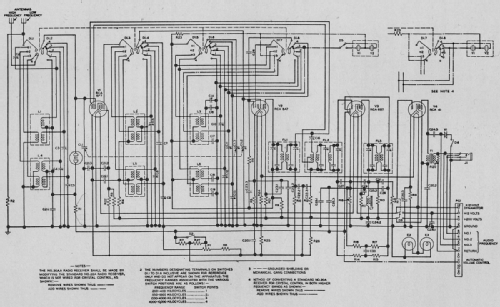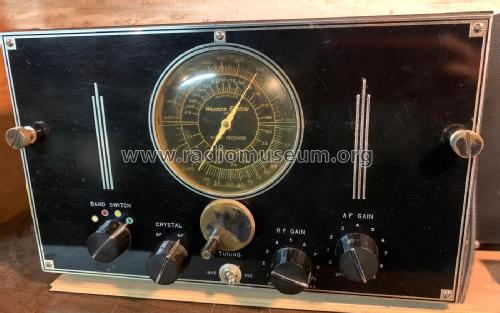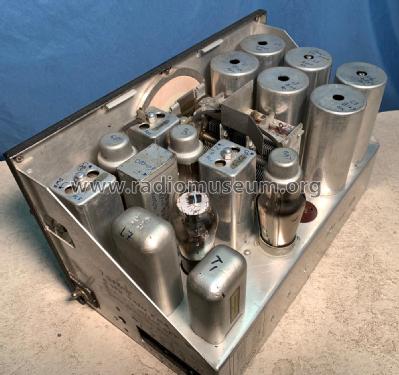20A aircraft receiver base station version
Western Electric Company Inc.; New York (NY)
- Produttore / Marca
- Western Electric Company Inc.; New York (NY)
- Anno
- 1936 ?
- Categoria
- Ricevitore amatoriale (può includere bande broadcast)
- Radiomuseum.org ID
- 314656
Clicca sulla miniatura dello schema per richiederlo come documento gratuito.
- Numero di tubi
- 4
- Principio generale
- Supereterodina con reazione; ZF/IF 96 kHz; 2 Stadi BF
- N. di circuiti accordati
- 2 Circuiti Mod. Amp. (AM)
- Gamme d'onda
- Onde medie (OM), lunghe (OL) e 2 onde corte (2 x OC).
- Tensioni di funzionamento
- Fornita mediante altra unità o unità principale. / 200 vdc & 12 vdc Volt
- Altoparlante
- - Per cuffie o amplificatori esterni
- Materiali
- Mobile di metallo
- Radiomuseum.org
- Modello: 20A aircraft receiver [base station version] - Western Electric Company Inc.;
- Forma
- Diverse forme (descritte nelle note).
- Dimensioni (LxAxP)
- 13 x 8 x 9 inch / 330 x 203 x 229 mm
- Annotazioni
-
Amelia Earhart used this model aircraft radio receiver on her ill-fated 1937 flight from New Guinea to Howland Island in the Pacific. It was available in the base station configuration you see here. With the face plate removed, a mechanism could be installed that made it possible to control the radio from the cockpit by mechanical remote control. Some say that the shortcomings of this radio contributed to the failure of the flight.
The manufacturer's intention was to create a radio that was compact and light weight. They did several things to accomplish this. They used a 6F7 dual function tube that served as both an RF and IF amplifier. They included regeneration to increase gain. They used a 6B7 tube that served four functions (IF amplifier, 2nd detector, AVC), then after demodulation the audio signal was passed through the tube again for amplification. The circuit was very compact and difficult to trace and troubleshoot. The compactness could lead to internal feedback problems.
The output was through headphones and required two antennas. (high and low frequencies). The output tube was a type 41. The power requirement was 200 VDC and 12 VDC provided by a generator run by one of the engines.
The case is a rectangular aluminum box (removed in photos).
- Peso netto
- 15 lb (15 lb 0 oz) / 6.810 kg
- Letteratura / Schemi (2)
- - - Manufacturers Literature
- Autore
- Modello inviato da Ron Boucher. Utilizzare "Proponi modifica" per inviare ulteriori dati.
- Altri modelli
-
In questo link sono elencati 171 modelli, di cui 150 con immagini e 32 con schemi.
Elenco delle radio e altri apparecchi della Western Electric Company Inc.; New York (NY)
Collezioni
Il modello 20A aircraft receiver fa parte delle collezioni dei seguenti membri.


